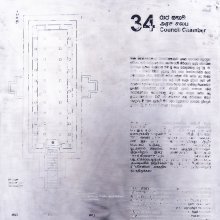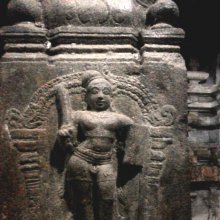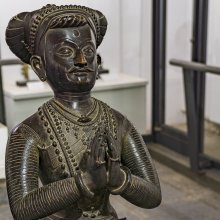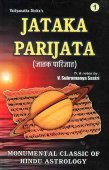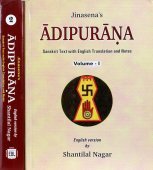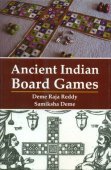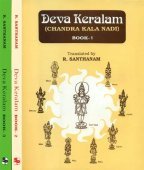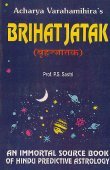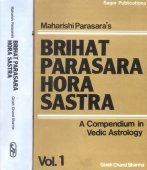Raja, Rāja, Rājā: 37 definitions
Introduction:
Raja means something in Buddhism, Pali, Hinduism, Sanskrit, Jainism, Prakrit, the history of ancient India, Marathi, Hindi, biology, Tamil. If you want to know the exact meaning, history, etymology or English translation of this term then check out the descriptions on this page. Add your comment or reference to a book if you want to contribute to this summary article.
Images (photo gallery)
(+35 more images available)
In Hinduism
Yoga (school of philosophy)
Source: Wisdom Library: YogaRaja means "royal";
See: Raja Yoga.
Source: ORA: Amanaska (king of all yogas): A Critical Edition and Annotated Translation by Jason BirchRāja (राज) refers to the “king” (of all Yogas), according to the Amanaska Yoga treatise composed in 198 Sanskrit verses dealing with topics as absorption (laya), yogic powers (siddhi) and liberation, presented in the form of a dialogue between Īśvara and Vāmadeva.—The practice of amanaska (the no-mind state) was generally understood in medieval Yoga texts to be synonymous with Samādhi, that is to say, the state of Rājayoga. [...] The Amanaska (2.3-4) defines rājayoga in two ways; firstly, it is the king (rāja) of all Yogas and, secondly, it causes the Yogin to attain the supreme Self who is the illustrious king (rāja).

Yoga is originally considered a branch of Hindu philosophy (astika), but both ancient and modern Yoga combine the physical, mental and spiritual. Yoga teaches various physical techniques also known as āsanas (postures), used for various purposes (eg., meditation, contemplation, relaxation).
Ayurveda (science of life)
Nighantu (Synonyms and Characteristics of Drugs and technical terms)
Source: Wisdom Library: Raj NighantuRaja (रज) refers to the “pollen” of flowers, as mentioned in a list of five synonyms, according to the second chapter (dharaṇyādi-varga) of the 13th-century Raj Nighantu or Rājanighaṇṭu (an Ayurvedic encyclopedia). The Dharaṇyādi-varga covers the lands, soil, mountains, jungles and vegetation’s relations between trees [viz., Raja] and plants and substances, with their various kinds.
Source: WorldCat: Rāj nighaṇṭuRaja (रज) is another name for Parpaṭa, a medicinal plant identified with various varieties and species, according to verse 5.8-10 of the 13th-century Raj Nighantu or Rājanighaṇṭu. The fifth chapter (parpaṭādi-varga) of this book enumerates sixty varieties of smaller plants (kṣudra-kṣupa). Together with the names Raja and Parpaṭa, there are a total of eighteen Sanskrit synonyms identified for this plant.
Unclassified Ayurveda definitions
Source: Cogprints: Concepts of Human Physiology in AyurvedaMenstrual blood (‘Raja’) also is a derivative of ‘Rasa’ only. Menstruation occurs in females once in every month and lasts for about three days. This process of menstrual cycle begins at the age of twelve years and stops at about fifty years of age (Suśrutasaṃhitā Sūtrasthāna 14/6). During the act of copulation, production of ‘Śukra’ occurs in females also; and it should not be thought that it is of no use in the process of production of em bryo i.e., it is also of definite use (Aṣṭāṅgahṛdayasaṃhitā Śārirasthāna 1/72).
Source: gurumukhi.ru: Ayurveda glossary of terms1) Raja (रज):—To be affected or moved
2) [rajaḥ] Synonym of curna fine form of herbal powder a solid doses forms used for therapeutics

Āyurveda (आयुर्वेद, ayurveda) is a branch of Indian science dealing with medicine, herbalism, taxology, anatomy, surgery, alchemy and related topics. Traditional practice of Āyurveda in ancient India dates back to at least the first millenium BC. Literature is commonly written in Sanskrit using various poetic metres.
Purana and Itihasa (epic history)
Source: archive.org: Puranic Encyclopedia1) Raja (रज).—A warrior of Subrahmaṇya. (Śalya Parva, Chapter 45, Verse 78).
2) Raja (रज).—A Sage. He was one of the sons born to Vasiṣṭha of Ūrjā.
3) Rājā (राजा).—One of the two gate-keepers of Sūryadeva. (Bhaviṣya Purāṇa, Brāhmakāṇḍa).
4) Raja (रज).—One of the seven sons of Vasiṣṭha by Ūrjā, the other six being Gotra, Ūrdhvabāhu, Savana, Anagha, Sutapas, and Śukra. Holy souls, these seven were Saptarṣis in the third Manvantara. (Viṣṇu Purāṇa, Part 1, Chapter 10).
Source: Cologne Digital Sanskrit Dictionaries: The Purana Index1a) Raja (रज).—Son of Viraja and father of Ketuman (Śatajit, Viṣṇu-purāṇa).*
- * Brahmāṇḍa-purāṇa II. 14. 70; III. 8. 19; Viṣṇu-purāṇa II. 1. 40.
1b) Son of Dhara.*
- * Brahmāṇḍa-purāṇa III. 3. 22.
1c) Is Rājasīvṛtti: Leads to duhkha and Tṛṣa.*
- * Brahmāṇḍa-purāṇa IV. 3. 32-41.
1d) One of the seven sons of Vasiṣṭha and Ūrjā; wife Mārkaṇḍeyī and son Ketuman.*
- * Vāyu-purāṇa 28. 36-37; Viṣṇu-purāṇa I. 10. 13.
1e) The quality present both in tamas and satva as oil in the oil-seed and ghee in milk; it is the result of agitation in the pradhāna.*
- * Vāyu-purāṇa 3. 2; 5. 10, 12.
1f) Son of Arija; a Rājaṛṣi and tapassiddha.*
- * Vāyu-purāṇa 33. 60; 57. 122.
1g) One of the ten branches of the Rohita clan of devas.*
- * Vāyu-purāṇa 100. 90.
2a) Rāja (राज).—One of the ten branches of the Rohita clan of devas.*
- * Brahmāṇḍa-purāṇa IV. 1. 86; Vāyu-purāṇa 100. 90.
2b) (see also Rājan) qualifications of: should not retreat from the battle-field; should protect Brahmanas, the poor and the helpless; insist on svadharma of his subjects, aid tapasvins, befriend the truthful and avoid the vakras;1 precautions to be observed; befriend enemy's subjects and provide them with jobs; use spies in administration;2 prescriptions for personal conduct and successful rule of a king; some vratas like the āgneya, pārthiva, etc.3 Avoid the two kinds of discontent,—antahkopa and bahihkopa; the former brings more ruin it being towards the members of the royal household; the latter towards Sāmantas.4 Collect taxes through faithful servants annually.5 Earn the title of Rājaṛṣi like Yayāti;6 ety. of.7
- 1) Matsya-purāṇa 215. 56-99; 238. 12.
- 2) Ib. 220. 8-47.
- 3) Ib. 223. 7f.
- 4) Ib. 226. 3-12.
- 5) Ib. 215. 57.
- 6) Ib. 13. 62; 43. 23; 46. 28.
- 7) Vā 62. 134; 109. 54.
Raja (रज) is a name mentioned in the Mahābhārata (cf. IX.44.68) and represents one of the many proper names used for people and places. Note: The Mahābhārata (mentioning Raja) is a Sanskrit epic poem consisting of 100,000 ślokas (metrical verses) and is over 2000 years old.
Source: Shodhganga: The saurapurana - a critical study1) Raja (रज) refers to one of the seven sons of Vasiṣṭha and Ūrjā: one of the twenty-four daughters of Dakṣa and Prasūti, according to the Vaṃśa (‘genealogical description’) of the 10th century Saurapurāṇa: one of the various Upapurāṇas depicting Śaivism.—Accordingly, Ākūti was married to Ruci and Prasūti to Dakṣa. Dakṣa produced in Prasūti twenty-four daughters. [...] [Ūrjā was given to Vasiṣṭha.] From Vasiṣṭha and Ūrjā, seven sons—Raja, Gotra, Ūrdhvabāhu, Savana, Anagha, Sutapā and Śukla and a daughter Puṇḍarikā were born.
2) Raja (रज) is the name of one of the seven sages (saptarṣi) in the Uttama-Manvantara: one of the fourteen Manvantaras.—Accordingly, “In the Uttama Manvantara the Sudhāmās are the Gods having twelve groups like Pratardana, Śiva, Satya, Vaśavarti etc. Sudānti was the Indra. Raja, Gotra, Ardhabāhu, Savana, Anagha, Sutapā and Śukra are the Seven sages.

The Purana (पुराण, purāṇas) refers to Sanskrit literature preserving ancient India’s vast cultural history, including historical legends, religious ceremonies, various arts and sciences. The eighteen mahapuranas total over 400,000 shlokas (metrical couplets) and date to at least several centuries BCE.
General definition (in Hinduism)
Source: Wisdom Library: HinduismThe menstrual blood (raja, रज) is considered to be impure and the source for the following three (impure) features of the gross physical body:
- tvac (‘skin’),
- rakta (‘blood’),
- māṃsa (‘flesh’).
In Buddhism
Theravada (major branch of Buddhism)
Source: Pali Kanon: Pali Proper Names1. Raja Vagga. The ninth section of the Majjhima Nikaya (Suttas 81 90). M.ii.44ff.
2. Raja Vagga. The fourteenth chapter of the Pancaka Nipata of the Anguttara Nikaya. A.iii.147 64.
1. Raja Sutta. Five good qualities in a king pure descent, great wealth, strong army, wise minister, glory which make him secure in his conquest; five similar qualities in a monk virtuous conduct, wide and deep learning, active energy, insight, release which bring him emancipation. A.iii.149ff.
2. Raja Sutta. On the eighth day of the lunar fortnight, the ministers of the Catummaharajano visit the earth, on the fourteenth day their sons, on the fifteenth day the kings themselves. They report what they find at the assembly of the gods in Sudhamma hall and rejoice if men have done good, sorrowing if they have done evil. A.i.142f.
3. Raja Sutta. Men should keep their fast, not in order to be Sakka who is not rid of passion, malice or delusion, but to be arahants. A.i.143f.
4. Raja Sutta. Pasenadi asks the Buddha if there is any born thing which is free from decay and death. No, answers the Buddha, not even the arahants. S.i.71.
5. Raja Sutta. Just as all petty princes follow in the train of a universal monarch, so do all profitable states follow earnestness. S.v.44.
-- or --
. A Yakkha, one of the messengers of Kuvera. D.iii.201; DA.iii.967.
Theravāda is a major branch of Buddhism having the the Pali canon (tipitaka) as their canonical literature, which includes the vinaya-pitaka (monastic rules), the sutta-pitaka (Buddhist sermons) and the abhidhamma-pitaka (philosophy and psychology).
Tibetan Buddhism (Vajrayana or tantric Buddhism)
Source: Wisdom Library: Tibetan BuddhismRaja (रज) is the name of a Rāśi (zodiac sign) mentioned as attending the teachings in the 6th century Mañjuśrīmūlakalpa: one of the largest Kriyā Tantras devoted to Mañjuśrī (the Bodhisattva of wisdom) representing an encyclopedia of knowledge primarily concerned with ritualistic elements in Buddhism. The teachings in this text originate from Mañjuśrī and were taught to and by Buddha Śākyamuni in the presence of a large audience (including Raja).
Source: OSU Press: Cakrasamvara SamadhiRāja (राज) or Rājatīrtha refers to one of the “eleven holy bathing places” (Puṇyatīrtha), according to the Guru Mandala Worship (maṇḍalārcana) ritual often performed in combination with the Cakrasaṃvara Samādhi, which refers to the primary pūjā and sādhanā practice of Newah Mahāyāna-Vajrayāna Buddhists in Nepal.

Tibetan Buddhism includes schools such as Nyingma, Kadampa, Kagyu and Gelug. Their primary canon of literature is divided in two broad categories: The Kangyur, which consists of Buddha’s words, and the Tengyur, which includes commentaries from various sources. Esotericism and tantra techniques (vajrayāna) are collected indepently.
Mahayana (major branch of Buddhism)
Source: Brill: Śaivism and the Tantric Traditions (mahayana)Rāja (राज) refers to “kings”, according to the sixth chapter of the Suvarṇaprabhāsottamasūtra, which teaches the protection of the state for the mutual benefit of the Buddhist Sangha and the monarch.—Accordingly, the Caturmahārājaparivarta or Chapter on the Four Great Kings, conveys an explicit message: those kings (manuṣya-rāja) who venerate the Suvarṇaprabhāsottama and support the Buddhist Sangha will be protected from hostile armies and other dangers by the Four Great Kings, and their countries will exist in highest state of harmony. Simultaneously, those who ignore this tradition will face decline. [...] At one point the scripture calls itself a rāja-śāstra, a text for kings.

Mahayana (महायान, mahāyāna) is a major branch of Buddhism focusing on the path of a Bodhisattva (spiritual aspirants/ enlightened beings). Extant literature is vast and primarely composed in the Sanskrit language. There are many sūtras of which some of the earliest are the various Prajñāpāramitā sūtras.
In Jainism
General definition (in Jainism)
Source: The University of Sydney: A study of the Twelve ReflectionsRāja (राज) refers to the “king (of time)”, according to the 11th century Jñānārṇava, a treatise on Jain Yoga in roughly 2200 Sanskrit verses composed by Śubhacandra.—Accordingly, “This world totters to the limit of the world of Brahmā with the fear of the beginning of a frown, and mountains immediately fall asunder by force of [the fact that] the earth is overcome by the weight of the heavy feet, of those heroes who are all led to death by the king of time (kāla-rāja—kālarājena sarve nītā vārtāvaśeṣaṃ) in [the space of] some days. Nevertheless, desire is intense only in a living being who is bereft of sense”.
Synonyms: Nāyaka.

Jainism is an Indian religion of Dharma whose doctrine revolves around harmlessness (ahimsa) towards every living being. The two major branches (Digambara and Svetambara) of Jainism stimulate self-control (or, shramana, ‘self-reliance’) and spiritual development through a path of peace for the soul to progess to the ultimate goal.
India history and geography
Source: Cologne Digital Sanskrit Dictionaries: Indian Epigraphical GlossaryRāja.—(LP), abbreviation of Rājaputra (Rājpūt); explained as a cavalry-soldier or a Rājpūt. See Ep. Ind., Vol. XXXIV, pp. 143-44, where it is probably an abbreviation of Rājakula (Rāval). Note: rāja is defined in the “Indian epigraphical glossary” as it can be found on ancient inscriptions commonly written in Sanskrit, Prakrit or Dravidian languages.
Source: Shodhganga: A translation of Jhaverchand Meghanis non translated folk talesRaja refers to “King”.—It is defined in the glossary attached to the study dealing with Gujarat Folk tales composed by Gujarati poet Jhaverchand Meghani (1896-1947)

The history of India traces the identification of countries, villages, towns and other regions of India, as well as mythology, zoology, royal dynasties, rulers, tribes, local festivities and traditions and regional languages. Ancient India enjoyed religious freedom and encourages the path of Dharma, a concept common to Buddhism, Hinduism, and Jainism.
Biology (plants and animals)
Source: Google Books: CRC World Dictionary (Regional names)1) Raja in India is the name of a plant defined with Adiantum lunulatum in various botanical sources. This page contains potential references in Ayurveda, modern medicine, and other folk traditions or local practices It has the synonym Adiantum philippense L. (among others).
2) Raja is also identified with Crocus sativus It has the synonym Geanthus autumnalis Raf. (etc.).
3) Raja is also identified with Didymochlaena truncatula It has the synonym Adiantum lunulatum Houtt., nom. illeg., non Adiantum lunulatum Burm. f. (etc.).
Example references for further research on medicinal uses or toxicity (see latin names for full list):
· Journal of Japanese Botany (1996)
· Contributions from the United States National Herbarium (1974)
· Contributions from the United States National Herbarium (1974)
· Fl. Ital. (1860)
· BMC Complementary and Alternative Medicine (2004)
· Ic. Fil. Jap. (1929)
If you are looking for specific details regarding Raja, for example pregnancy safety, extract dosage, diet and recipes, chemical composition, side effects, health benefits, have a look at these references.

This sections includes definitions from the five kingdoms of living things: Animals, Plants, Fungi, Protists and Monera. It will include both the official binomial nomenclature (scientific names usually in Latin) as well as regional spellings and variants.
Languages of India and abroad
Pali-English dictionary
Source: BuddhaSasana: Concise Pali-English Dictionaryraja : (m.; nt.) (mano-group), dust; dirt; pollen; defilement; impurity. || rāja (m.), king.
Source: Sutta: The Pali Text Society's Pali-English DictionaryRājā, (Rājan) (cp. Vedic rājā, n-stem. To root *reg, as in Lat. rego (to lead, di-rect, cp. in meaning Gr. h(gemw/n): see etym. under uju. Cp. Oir. rī king, Gallic Catu-rīx battle king, Goth reiks=Ohg. rīhhi=rich or Ger. reich. Besides we have *reig in Ags. r&amacremacr; cean= reach; Ger. reichen.—The Dhtp only knows of one root rāj in meaning “ditti” i.e. splendour) king, a ruling potentate. The definition at Vin. III, 222 is “yo koci rajjaṃ kāreti. ” The fanciful etym. at D. III, 93= Vism. 419 is “dhammena pare rañjetī ti rājā” i.e. he gladdens others with his righteousness.—At the latter passage the origin of kingly government is given as the third stage in the constitution of a people, the 2 preceding being mahā-sammata (general consent) and khattiya (the land-aristocrats).—Cases. We find 3 systems of cases for the original Sk. forms, viz. the contracted, the diæretic and (in the pl.) a new formation with —ū-. Thus Gen. & Dat. sg. rañño (Sk. rājñaḥ) Vin. III, 107; IV, 157; J. II, 378; III, 5; Vv 744; and rājino Sn. 299, 415; Th. 2, 463; J. IV, 495; Mhvs 2, 14; Instr. sg. raññā Vin. III, 43; J. V, 444; DhA. I, 164; PvA. 22; VbhA. 106; and rājinā (Sk. rajña) Mhvs 6, 2; Acc. sg. rājānaṃ Vin. IV, 157; Loc. raññe PvA. 76; Voc. rāja Sn. 422, 423. pl. Nom. rājāno A. I, 68; Gen. Dat. raññaṃ (Sk. rājñaṃ) D. II, 87; Mhvs 18, 32; and rājūnaṃ Vin. I, 228; Ud. 11; J. II, 104; III, 487; SnA 484; PvA. 101, 133; Instr. raññāhi A. I, 279 rājūhi Ud. 41; M. II, 120; J. I, 179; III, 45; Mhvs 5, 80; 8, 21; and rājubhi D. II, 258. Cp. Geiger, P. Gr. § 921.—1. rājā is a term of sovereignship. The term rājā as used in Buddhist India does not admit of a uniform interpretation and translation. It is primarily an appellative (or title) of a khattiya, and often the two are used promiscuously. Besides, it has a far wider sphere of meaning than we convey by any translation like “king” or even “sovereign, ” or “prince. ” We find it used as a designation of “king” in the sense of an elected or successory (crowned) monarch, but also in the meaning of a distinguished nobleman, or a local chieftain, or a prince with var. attributes characterizing his position according to special functions. From this we get the foll. scheme: (a) (based on mythological views: the king as representing the deity, cp. deva= king. Note that rājā never takes the place of deva in the meaning king, but that mahārāja is used in Voc. equivalent to deva) a world-king, over-lord, a so-called cakkavatti rājā. This is an office (as “Universal King”) peculiar to the Mahāpurisa or the (mythol.) “Great Man, ” who may become either the Saviour of men in the religious sense, a Sammā-sambuddha, or a just Ruler of the earth in the worldly sense, a King of Righteousness. These are the 2 gatis of such a being, as described at var. places of the Canon (e.g. Sn. p. 106; Sn. 1002, 1003; D. III, 142; A. I, 76). His power is absolute, and is described in the standard phrase “c. dhammiko dhamma-rājā cāturanto vijitāvī janapadatthāvariya-ppatto satta-ratana-samannāgato, ” e.g. D. III, 59. Dhammapāla gives the dignity of a C. as the first “human sovereign powers” (PvA. 117). ‹-› The four iddhi’s of a C. are given (quite crudely) at M. III, 176: he is beautiful, lives longer than others, is of a healthier constitution than others, he is beloved by the brahmins and householders. Other qualities: how his remains should be treated=D. II, 141; deserves a thūpa D. II, 142 sq.; his four qualities D. II, 145 (the 4 assemblies of khattiyas, brāhmaṇas, gahapatis & samaṇas are pleased with him). See under cakkavatti & ratana.—In a similar sense the term dhamma-rājā is used as Ep. of the Buddha Sn. 554 (rāj’âham asmi dh-. r. anuttaro); J. I, 262; and a reflection of the higher sphere is seen in the title of politeness (only used in Voc.) mahārāja, e.g. Sn. 416 (addressed to Bimbisāra) PvA. 22 (id.); J. VI, 515.—(b) (in a larger constitutional state) the crowned (muddhâvasitta) monarch (i.e. khattiya) as the head of the principality or kingdom. The definition of this (general) rājā at Nd2 542 is significant of the idea of a king prevalent in early Buddhist times. It is: “khattiyo muddh’âbhisitto vijita-saṅgāmo nihata-paccāmitto laddh’adhippāyo paripuṇṇa-koṭthāgāro, ” i.e. “a crowned noble, victorious in battle, slaying his foes, fulfilling his desires, having his storehouses full. ” This king is “the top of men” (mukhaṃ manussānaṃ) Vin. I, 246=Sn. 568. Cp. D. I, 7; Sn. 46 (raṭṭhaṃ vijitam pahāya); J. V, 448 and passim. See also below 3. 4 & 6.—In similes: see J. P. T. S. 1907, 128; & cp. Vism. 152 (r. va saddh’antagato), 336 (wishing to become an artisan). Here belongs the title of the king of the devas (Sakka) “deva-rājā, ” e.g. DhA. III, 269, 441; PvA. 62.—(c) (in an oligarchic sense) member of a kula of khattiyas, e.g. the kumāras of the Sakiyans and Koliyans are all called rājāno of the rājakulānaṃ in J. V, 413 sq. , or at least the heads of those kulas. Cp. B. Ind. p. 19.—(d) (in a smaller, autocratic state) a chieftain, prince, ruler; usually (collectively) as a group: rājāno, thus indicating their lesser importance, e.g. A. V, 22 (kuḍḍa-rājāno rañño cakkavattissa anuyuttā bhavanti: so read for anuyantā); Sn. 553 (bhoja° similar to rāja-bhoggā or bhogiyā as given at SnA 453); A. II, 74 sq. (dhammikā & a°); J. IV, 495. Similarly at Vin. I, 228 we find the division into the 3 ranks: mahesakkhā rājāno, majjhimā r. , nīcā r. Here also belongs the designation of the 4 lokapālā (or Guardians of the World) at cattāro mahā-rājāno, the mahā° being added for sake of politeness (cp. Note A on mahā), e.g. A. IV, 242. See also paṭirājā & cp. below 4 c.—(e) A wider range of meaning is attached to several sub-divisions (with rājā or without): officials and men who occasionally take the place of the king (royal functionaries), but are by public opinion considered almost equal to the king. Here belongs the definition of what is termed “rājāno” (pl. like d) at Vin. III, 47, viz. rājā, padesa-rājā, maṇḍalikā, antarabhogikā, akkhadassā, mahāmattā, ye vā pana chejjabhejjaṃ anusāsanti (i.e. those who have juridical power). See also below 4 b, and °putta, °bhogga (& other cpds. ).—2. It would fill a separate book, if we were to give a full monograph of kingship in and after the Buddha’s time; we therefore content ourselves with a few principal remarks. The office of king was hereditary: kula-santakaṃ rajjaṃ J. I, 395; II, 116; IV, 124; but we sometimes read of a king being elected with great pomp: J. I, 470; PvA. 74. He had the political and military power in his hand, also the jurisdiction, although in this he is often represented by the mahāmatta, the active head of the state. His 10 duties are mentioned at several places (see below under °dhammā). Others are mentioned e.g. at D. I, 135, where it is said he gives food and seed-corn to the farmer, capital to the trader, wages to the people in government service. His qualifications are 8 fold (see D. I, 137): well-born (“gentleman, ” khattiya), handsome, wealthy, powerful (with his army), a believer, learned, clever, intelligent. ‹-› His wealth is proverbial and is characterized in a stock phrase, which is also used of other ranks, like seṭṭhi’s & brāhmaṇa’s, viz. “aḍḍha mahaddhana mahābhoga pahūta-jātarūpa-rajata pahūta-vitt’ûpakaraṇa pahūtadhana-dhañña paripuṇṇa-kosa-koṭṭhāgāra, ” e.g. D. I, 134. For a late description of a king’s quality and distinction see Miln. 226, 227.—His disciplinary authority is emphasized; he spares no tortures in punishing adversaries or malefactors, esp. the cora (see below 4 c). A summary example of these punishments inflicted on criminals is the long passage illustrating dukkha (bodily pain) at Nd2 304III; cp. M. III, 163 (here also on a cora).—3. The king (rājā or khattiya) in the popular opinion, as reflected in language, heads several lists, which have often been taken as enumerating “castes, ” but which are simply inclusive statements of var. prominent ranks as playing a rôle in the social life of the state, and which were formulated according to diff. occasions. Thus some show a more political, some a more religious aspect. E. g. khattiya amacca brāhmaṇa gahapati D. I, 136; rājā brāhmaṇa gahapatika A. I, 68, where another formula has khattiya br. g. A. I, 66; J. I, 217; and the foll. with an intermediate “rank” (something like “royalty, ” “the royal household”) between the king and the brahmins: rājā rājaputtā brāhmaṇā gahapatikā negama-jānapadā A. II, 74 sq.; rājāno rāja-mahāmattā khattiyā br. , gah. , titthiyā D. III, 44 (translation Dialogues too weak “rājas & their officials”); rājā rājabhogga br. , gah. Vin. III, 221.—4. Var. aspects illustrating the position of the king in relation to other prominent groups of the court or populace: (a) rājā & khattiya. All kings were khattiyas. The kh. is a noble kat)e)coxήn (cp. Gr. h(gemw/n) as seen fr. definition jāti-khattiya at SnA 453 and var. contexts. Already in the Rig Veda the kṣatriya is a person belonging to a royal family (RV X. 109, 3), and rājanya is an Ep. of kṣatriya (see Zimmer, Altindisches Leben 213).—rājā khattiyo muddhâvassito “a crowned king” D. I, 69; III, 61 sq.; Vin. IV, 160; A. I, 106 sq.; II, 207 (contrasted with brāhmaṇa mahāsāla); III, 299 (if lazy, he is not liked by the people); M. III, 172 sq. (how he becomes a cakkavatti through the appearance of the cakka-ratana).—Without muddhâvasitta: rājāno khattiyā Dh. 294=Nett 165. Cp. khattiyā bhoja-rājāno the khattiyas, the (noble or lesser?) kings (as followers of the cakkavatti) Sn. 553 (see bhoja). At J. VI, 515. rājāno corresponds directly to khattiyā on p. 517 (saṭṭhisahassa°); cp. expression khattiya-kula J. I, 217 as equivalent to rāja-kula. (b) rājā & mahāmatta. The latter occupies the position of “Premier, ” but is a rank equal to the king, hence often called rājā himself: Vin. III, 47 where styled “akkhadassa mahāmatta. ” Otherwise he is always termed rāja-mahāmatta “royal minister, ” or “H. R. H. the Premier, ” e.g. Vin. I, 172; A. I, 279; Vin. I, 228 (also as Magadha-mahāmatta), and called himself a khattiya D. III, 44.—(c) rājā & cora. A prominent figure in the affairs of State is the “robber-chief” (mahā-cora). The contrast-pair rajāno (so always pl.) & cora is very frequent, and in this connection we have to think of rājāno as either smaller kings, knights or royals (royalists), i.e. officers of the kings or “the king’s Guards. ” Thus at J. III, 34 the C. explanation as rāja-purisā. It is here used as a term of warning or frightening “get up, robber, so that the kings (alias “policeman” ) won’t catch you”: uṭṭhehi cora mā taṃ gahesuṃ rājāno. Other passages are e.g. : D. I, 7 (rāja-kathā & corakathā)=Vin. I, 188; M. III, 163 (rājāno coraṃ āgucāriṃ gahetvā); A. I, 68, 154; It. 89 (rāj’âbhinīta+cor°); & in sequence rājāno corā dhuttā (as being dangerous to the bhikkhus) at Vin. I, 150, 161.—5. On the question of kingship in Ancient India see Zimmer, Altind. Leben pp. 162—175, 212 sq.; Macdonell & Keith, Vedic Index II. 210 sq.; Fick, Soc. Gl. 63—90; Foy, Die Königl. Gewalt nach den altind. Rechtsbüchern (Leipzig 1895); Rh. Davids, Buddhist India pp. 1—16; Hopkins, E. W. , The social and military position of the ruling caste in A. I. in J. A. O. S. 13, 179 sq.; Banerjea, Public Administration in A. I. 1916, pp. 63—93.—6. Kings mentioned by name (a very limited & casual list only, for detailed refs. see Dict’y of Names): Ajātasattu; Udena (DhA. I, 185); Okkāka; Dīghī (of Kosala; Vin. I, 342); Parantapa (of Kosambī; DhA. I, 164; ) Pasenadi (of Kosala; D. I, 87, 103; Vin. IV, 112, 157); Bimbisāra (of Magadha; Vin. IV, 116 sq.; Sn. 419); Bhaddiya; etc.—7. (fig.) king as sign of distinction (“princeps”), as the lion is called rājā migānaṃ Sn. 72; Vism. 650; the Himavant is pabbata-rājā A. I, 152; III, 44; and Gotama’s horse Kaṇthaka is called assa-rājā J. I, 62=VvA. 314.—Note. The compn form of rājā is rāja°.

Pali is the language of the Tipiṭaka, which is the sacred canon of Theravāda Buddhism and contains much of the Buddha’s speech. Closeley related to Sanskrit, both languages are used interchangeably between religions.
Marathi-English dictionary
Source: DDSA: The Molesworth Marathi and English Dictionaryraja (रज).—n m (S) Dust. 2 The pollen of flowers. 3 The menstrual discharge. 4 The second of the three properties of humanity, that of passion or foulness. See rajōguṇa. 5 Blood.
--- OR ---
raja (रज).—m (Radz. raja S) A particle (of metal, earth, powder &c.)
--- OR ---
rajā (रजा).—( A) Leave or permission in general. 2 Leave of absence. 3 Dismissal (from service or office).
--- OR ---
rājā (राजा).—m (S) A king, prince, potentate, sovereign. It is applied freely to toparchs and chieftains however narrow their dominions and scanty their subjects. Sanskrit adage. rājā mitraṃ kēna dṛṣṭaṃ śrutaṃvā A king and yet a friend! has it ever been seen or heard of? "Put not your trust in princes." 2 The leader or head (of a company or body). 3 Applied to the planet of the day on which a year commences; considered as governor of that year. Compounds are numerous; as rājapatnī A queen; rājaputra A prince; rājakanyā A princess; rājaguru, rājapurōhita, rājōpādhyāya, rājasabhā &c. This word enters freely into composition also with Maraṭhi words; as rājapasanta, rājadarabāra and others inserted in order. Under the second sense also compounds abound; as mṛga- rāja Chief of the beasts, the lion; graharāja Chief of the planets, the sun; tīrtharāja Chief of places or objects of pilgrimage, the ocean or Prayag; gajarāja, sarparāja, aśvarāja, dvijarāja, dēvarāja, kavi- rāja, vaidyarāja, paṇḍitarāja, svāmirāja, gaṇarāja, bhūtarāja, yakṣarāja, vanarāja (i. e. āpaṭā or śamī), vṛkṣarāja. Of the compounds bearing the first sense, kingi. e. regal or royal, the most approved have occurred above; some others, not demanding interpretation, are rājakānti, rājaśōbhā, rājakṛpā, rājacitta, rājamitra, rājapriya, rājāśraya, rājāśrita, rājabuddhi, rājasakhā, rājaraṅga, rājamahāla, rājavāṭī. 4 A term for an idiot or a silly fellow. 5 Applied to the
Source: DDSA: The Aryabhusan school dictionary, Marathi-Englishraja (रज).—n m Dust. The poilen of flowers. The menstrual discharge. Second of the three properties of man, satva, rajasū and tamas Blood. m A particle. rajācā gaja karaṇēṃ Make a mountain of a molehill.
--- OR ---
rajā (रजा).—f Leave; leave of absence. Dis- missal.
--- OR ---
rājā (राजा).—m A king; the leader.
Marathi is an Indo-European language having over 70 million native speakers people in (predominantly) Maharashtra India. Marathi, like many other Indo-Aryan languages, evolved from early forms of Prakrit, which itself is a subset of Sanskrit, one of the most ancient languages of the world.
Sanskrit dictionary
Source: DDSA: The practical Sanskrit-English dictionaryRaja (रज).—See रजस् (rajas).
Derivable forms: rajaḥ (रजः).
Source: Cologne Digital Sanskrit Dictionaries: Edgerton Buddhist Hybrid Sanskrit DictionaryRaja (रज).—m. (= next), dyer: raja-mahattarakasya Mahāvastu ii.467.11 (no v.l.); sarve rajā (v.l. rajakā) 15. In Sanskrit, Pali, and Prakrit rajaka is applied to a washerman, who combined this trade with dyeing; in Mahāvastu seems clearly distinguished from (coḍaka-)dhovaka, washerman (of clothes), which occurs in the preccding section, 466.4 ff. Only dyeing, not washing, is mentioned in 467.10 ff.
Source: Cologne Digital Sanskrit Dictionaries: Shabda-Sagara Sanskrit-English DictionaryRaja (रज).—mn.
(-jaḥ-jaṃ) 1. Dust. 2. The pollen of flowers. 3. The menstrual excretion. 4. The second property of humanity, the quality of passion. E. ranj to colour, &c., aff. ac, and the nasal rejected; this word more commonly occurs rajas, q. v.
Source: Cologne Digital Sanskrit Dictionaries: Benfey Sanskrit-English DictionaryRaja (रज).— (see rajas), m. 1. Dust, [Hitopadeśa] i. [distich] 152, M.M. 2. The pollen of flowers. 3. The menstrual excretion. 4. The quality of passion.
--- OR ---
Rāja (राज).—[-rāja], a substitute for rājan, when latter part of comp. words, m. A king.
Source: Cologne Digital Sanskrit Dictionaries: Cappeller Sanskrit-English DictionaryRaja (रज).—[masculine] dust, the pollen of flowers, a man’s name.
--- OR ---
Rāja (राज).—[masculine] (only —°) prince, king, first or best of.
Source: Cologne Digital Sanskrit Dictionaries: Monier-Williams Sanskrit-English Dictionary1) Raja (रज):—[from raj] a etc. See p. 863, col. 1.
2) [from raj] 1. raja m. ([gana] pacādi) = rajas, dust (cf. nī-, vi-r)
3) [v.s. ...] the pollen of flowers, [Prasaṅgābh.]
4) [v.s. ...] the menstrual excretion (also n.), [cf. Lexicographers, esp. such as amarasiṃha, halāyudha, hemacandra, etc.]
5) [v.s. ...] emotion, affection, [cf. Lexicographers, esp. such as amarasiṃha, halāyudha, hemacandra, etc.] : the quality of passion, [Uṇādi-sūtra iv, 216 [Scholiast or Commentator]]
6) [v.s. ...] Name of one of Skanda’s attendants, [Mahābhārata]
7) [v.s. ...] of a king (son of Viraja), [Viṣṇu-purāṇa]
8) [v.s. ...] 2. raja in [compound] for rajas.
9) Rāja (राज):—[from rāj] 1. rāja m. (ifc.) = rājan 1, a king, sovereign, chief or best of its kind, [Mahābhārata; Kāvya literature etc.]
10) [v.s. ...] 2. rāja in [compound] for 1. rājan.
Source: Cologne Digital Sanskrit Dictionaries: Yates Sanskrit-English DictionaryRaja (रज):—[(jaḥ-jaṃ)] 1. m. n. Dust; pollen; menses; the quality of passion.
Source: DDSA: Paia-sadda-mahannavo; a comprehensive Prakrit Hindi dictionary (S)Rāja (राज) in the Sanskrit language is related to the Prakrit word: Rāya.
[Sanskrit to German]
Sanskrit, also spelled संस्कृतम् (saṃskṛtam), is an ancient language of India commonly seen as the grandmother of the Indo-European language family (even English!). Closely allied with Prakrit and Pali, Sanskrit is more exhaustive in both grammar and terms and has the most extensive collection of literature in the world, greatly surpassing its sister-languages Greek and Latin.
Hindi dictionary
Source: DDSA: A practical Hindi-English dictionary1) Raja (रज) [Also spelled raj]:—(nf) menstruation; dust; (nm) the second of the three [guṇa] characterising human nature (see [rajoguṇa]); an allomorph of [rāja] (i.e. [rajavāḍā]); ~[kaṇa] dust particle.
2) Rajā (रजा):—(nf) will, wish; consent, permission.
3) Rāja (राज) [Also spelled raj]:—(nm) a kingdom, realm; state; reign; an allomorph of '[rājā]' which when prefixed or suffixed to numerous other words denotes of the king/state or excellence, supremacy, etc.; a builder, mason; ~[kathā] the tale of a king’s exploits; ~[kanyā] a princess; -[kara] statetax; ~[kāja] public affairs, affairs of the state; governance; ~[kārya] see ~[kāja]; ~[kumāra] a prince; ~[kumārī] a princess; ~[kula] a dynasty, regal family; ~[koṣa] fisc; public/state exchequer; treasury; ~[koṣīya] fiscal; ~[kṣamā] amnesty; ~[gaddī] royal throne; ~[gīra] a mason; ~[gīrī] masonry; ~[gṛha] a palace, regal mansion; ~[cinha] regalia, royal insignia; state emblem; ~[taṃtra] monarchy, monarchical system of government; ~[taṃtravādī] royalist(ic); ~[taṃtrīya] monarchical; ~[tilaka] coronation; annointing at the time of coronation; ~[daṃḍa] regal command; royal sceptre; punishment prescribed by law; ~[dūta] an ambassador; ~[dūta, asādhāraṇa] ambassador extraordinary; ~[dūtāvāsa] an embassy; ~[droha] lese-majesty, sedition, treason; ~[droha, ghora] high treason; ~[drohapūrṇa] seditious; ~[drohātmaka] seditious; ~[drohī] a seditionist; ~[dharma] state religion; royal duty; ~[patha] a highway; -[paddhati] royal system; polity; royal policy; ~[pāṭa] reign, royal throne; •[sauṃpanā] to hand over the reins of kingdom/governance; ~[pāla] a governor; ~[putra] a prince; ~[putrī] a princess; ~[puruṣa] a state employee/official; ~[pūta] a class of kshatriyas known for their valour and bravery; ~[pūtānā] the land of the Rajputs, Rajasthan; ~[prāsāda] a palace; ~[bāhā] a big canal; ~[bhakta] a loyalist; loyal to the ruler/state; ~[bhakti] loyalism, loyalty or allegiance to the ruler/state; ~[bhattā] privy purse; ~[maṃḍala] satellite states; chamber of princes; -[maṃtrī] a minister of a king; ~[marmajña] a statesman; ~[marmajñatā] statesmanship; ~[mahala] a palace; ~[mahiṣī] a queen; ~[mudrā] signet, royal seal; ~[yakṣmā] tuberculosis; ~[yoga] an auspicious combination of planets (in one’s horoscope) that forebodes elevation to royalty; —[yogya] befitting a king; -[roga] an incurable or long-lasting disease;tuberculosis; ~[lakṣmī] regal majesty, royal grandeur, kingly prosperity and splendour; state goddess of prosperity; ~[vaṃśa] a dynasty; ~[vittīya] fiscal; ~[viddā] see [rājanīti; -vidroha] revolt, rebellion, insurrection; ~[vidrohī] a rebel, an insurgent; -[viplava] anarchy, revolt; ~[vṛtti] privy purse; ~[vaidya] physician of a king; an eminent physician; -[vyavasthā] polity; ~[śrī] royal grandeur / majesty, regal splendour and prosperity; see ~[lakṣmī; -saṃskaraṇa] de luxe edition; ~[sattā] royal authority; monarchy; ~[sattātmaka] monarchical, pertaining to a system of government where authority is wielded by a ruler; ~[sabhā] a royal court; ~[samāja] an assembly of princes, princely assembly; royal court; ~[sūya] a typical sacrifice in olden times which, when successfully performed by a king, entitled him to the designation of an Emperor ([samrāṭa); ~siṃhāsana] the royal throne; ~[hasa] a kind of swan or goose (with red legs and bill sometimes compared to a flamingo); —[ulaṭanā] to bring about a coup, to overthrow the esta blished administration; —[karanā] to rule; to enjoy royal privileges/luxury; —[denā] to hand over the reins of kingdom; —[para baiṭhanā] to ascend the throne, to be installed as the ruler; —[rajanā] to live in princely splendour, to live like a prince.
4) Rāja (राज) [Also spelled raj]:—(nm) a secret; ~[dāṃ/dāra] one who knows the secret; one who shares (somebody’s) secret, confidant; —[khola denā/-phāśa karanā] to let the cat out of the bag, to blow the gaff.
5) Rājā (राजा):—(nm) a king, monarch, prince; darling; —[beṭā] good boy; —[ke ghara motiyoṃ kā kyā kāla] ? there is as good fish in the sea as ever came out of it.
6) (a) willing, agreeable; (nf) willingness; well-being; -[khuśī] welfare, well-being; ~[nāmā] an agreement; compromise.
...
Kannada-English dictionary
Source: Alar: Kannada-English corpusRaja (ರಜ):—
1) [noun] any matter in fine, dry particles; dust.
2) [noun] the fine spores that contain male gametes and that are borne by an anther in a flowering; pollen.
3) [noun] any material rejected or thrown away as worthless; trash; refuse; rubbish.
4) [noun] an imperfection; a defect.
5) [noun] the deep and vivid red colour; crimson.
6) [noun] The monthly discharge of blood from the uterus of nonpregnant women from puberty to menopause; menses.
7) [noun] absence of light or illumination; darkness.
8) [noun] dynamism, vigour, impetuousness, etc. but lack of wisdom, as the second of the three types of fundamental qualities.
9) [noun] the perennial plant Crocus sativus of Iridaceae family; saffron crocus.
10) [noun] the dried, aromatic stigmas of this plant, used in flavoring and colouring foods; saffron.
--- OR ---
Raja (ರಜ):—
1) [noun] a day of freedom from labour; day set aside for leisure and recreation; holiday.
2) [noun] permission to be absent from duty or work; leave.
3) [noun] the period for which such permission is granted; leave.
--- OR ---
Rajā (ರಜಾ):—[noun] = ರಜ [raja]2.
--- OR ---
Rāja (ರಾಜ):—
1) [noun] a male ruler of a nation or state, who got the power by heredity ; a king.
2) [noun] a man of kṣatriya (military) caste.
3) [noun] a master; a lord.
4) [noun] the moon.
5) [noun] Indra, the lord of gods.
6) [noun] a sage who leads an ascetic life.
7) [noun] (in comp.) a superior, excellent man or animal8) [noun] ಯಾವ ರಾಜನಿಗೆ ರಾಜ್ಯಬಂದರೂ ರಾಗಿ ಬೀಸುವುದು ತಪ್ಪದು [yava rajanige rajyabamdaru ragi bisuvudu tappadu] yāva rājanige rājya bandarū rāgi bīsuvudu tappadu (prov.) whoever comes to rule the country, the poor man’s suffering never ends; whosoever is king, thou shalt be his men.
Kannada is a Dravidian language (as opposed to the Indo-European language family) mainly spoken in the southwestern region of India.
Nepali dictionary
Source: unoes: Nepali-English Dictionary1) Raja (रज):—n. 1. menstrual discharge; menses; 2. a small particle; dust (of matter); 3. the dust or pollen of flowers; 4. the second of three gurus or constituent qualities of all material substances;
2) Rāja (राज):—n. 1. rule; reign; government; administration; 2. country; kingdom; state; 3. honor taking seat; 4. province belonging to that state or king; 5. royalty; kingly state;
3) Rājā (राजा):—n. 1. king; monarch; 2. the Books of Kings; two books of the Holy Scriptures relating the history of Israel;
Nepali is the primary language of the Nepalese people counting almost 20 million native speakers. The country of Nepal is situated in the Himalaya mountain range to the north of India.
See also (Relevant definitions)
Starts with (+1306): Raja berangkat, Raja maratu, Raja Yoga, Raja-adana, Raja-anka, Raja-arghika, Raja-ashraya, Raja-bhandara, Raja-bhavya-sarva-pratyaya-sameta, Raja-bu-bu, Raja-bubu, Raja-datti, Raja-grahya-samasta-pratyaya-samanvita, Raja-hundika, Raja-hunu, Raja-jambuh, Raja-jira, Raja-kecarivatakam, Raja-kutumipannu, Raja-lipikara.
Ends with (+1118): Abhavasamudgataraja, Abhavasvabhavasamudgataraja, Abhayaraja, Abhicaraja, Abhinipraja, Abhiraja, Abhraja, Abhyudgataraja, Abjaraja, Acalatakkiraja, Acalendraraja, Acaraja, Acaratarkiraja, Achalatakkiraja, Achalendraraja, Acharatarkiraja, Achyutagraja, Acyutagraja, Adbhutakrishnaraja, Adhimaharaja.
Full-text (+4497): Rajas, Rajasa, Agnirajas, Rajapurusha, Araja, Shatatin, Balaraja, Rajashaya, Rajaska, Virajahprabha, Dharmaraja, Rajadroha, Dvijatirajan, Rajakadamba, Rajadanta, Rajavasati, Rajakarya, Rajaraja, Ghataraja, Arajas.
Relevant text
Search found 283 books and stories containing Raja, Raajaa, Rāja, Rājā, Rajā, Rajaa; (plurals include: Rajas, Raajaas, Rājas, Rājās, Rajās, Rajaas). You can also click to the full overview containing English textual excerpts. Below are direct links for the most relevant articles:
Garga Samhita (English) (by Danavir Goswami)
Verse 6.21.11 < [Chapter 21 - In the Description of the Third Fort, the Glories of Piṇḍāraka-tīrtha]
Verse 2.1.35 < [Chapter 1 - Description of the Entrance in Vṛndāvana]
Verse 2.1.38 < [Chapter 1 - Description of the Entrance in Vṛndāvana]
Shrimad Bhagavad-gita (by Narayana Gosvami)
Verse 14.10 < [Chapter 14 - Guṇa-traya-vibhāga-yoga]
Verse 14.5 < [Chapter 14 - Guṇa-traya-vibhāga-yoga]
Verse 17.1 < [Chapter 17 - Śraddhā-traya-vibhāga-yoga]
Bhagavatpadabhyudaya by Lakshmana Suri (study) (by Lathika M. P.)
The Subtle Body < [Chapter 3 - References to Śaṅkara’s Philosophy]
The Renaissance Background < [Chapter 1 - Life and Works of Lakṣmaṇa Sūrin]
Cosmology and the powers of Māya < [Chapter 3 - References to Śaṅkara’s Philosophy]
Sahitya-kaumudi by Baladeva Vidyabhushana (by Gaurapada Dāsa)
Text 10.244 < [Chapter 10 - Ornaments of Meaning]
Text 4.94 < [Chapter 4 - First-rate Poetry]
Text 2.37 < [Chapter 2 - The Natures of Words (śabda)]
Brihad Bhagavatamrita (commentary) (by Śrī Śrīmad Bhaktivedānta Nārāyana Gosvāmī Mahārāja)
Verse 1.5.95 < [Chapter 5 - Priya (the beloved devotees)]
Verse 1.2.1 < [Chapter 2 - Divya (the celestial plane)]
Verse 1.1.53-54 < [Chapter 1 - Bhauma (the earthly plane)]
Vivekachudamani (by Shankara)
Related products
(+7 more products available)
